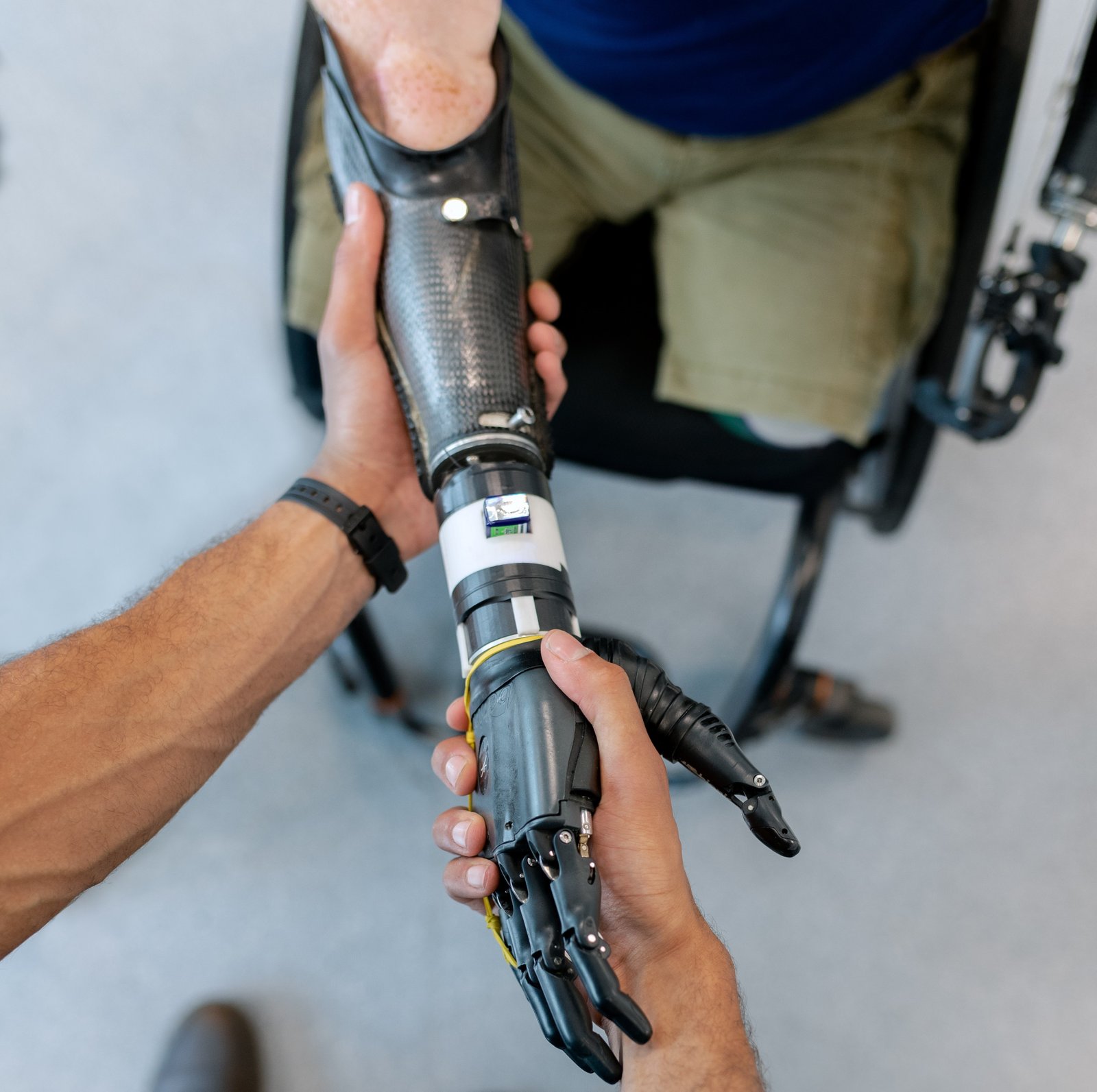
Surgery has come a long way since crude tools and brutal procedures. Today, we have access to the most advanced technology, including robotic surgical systems that revolutionize medicine. With the ability to perform minimally invasive surgeries with unparalleled precision and accuracy, robotic surgery is changing how we approach everything from routine procedures to complex operations. But what exactly is robotic surgery, and how does it work? In this article, we’ll explore the world of robotic surgery, examining the benefits, drawbacks, and potential impact of this cutting-edge technology on the Future of healthcare. Whether you’re a medical professional or simply someone interested in the latest advancements in technology, this is a topic you won’t want to miss. So join us as we dive deep into the world of robotic surgery and discover the incredible power of this game-changing technology.
The History of Robotic Surgery
The history of robotic surgery can be traced back to the early 1980s when the first robotic system, the PUMA 560, was developed. This system was used primarily for laboratory research but paved the way for developing more advanced robotic surgical systems. In the early 2000s, the da Vinci Surgical System was introduced, which marked a significant breakthrough in robotic surgery. Produced by Intuitive Surgical, the da Vinci system quickly gained popularity among medical professionals due to its precision, accuracy, and minimally invasive approach.
Benefits of robotic surgery
Robotic surgery offers several benefits over traditional surgical procedures. One of the most significant advantages of robotic surgery is its ability to perform minimally invasive surgeries. This means that surgeons can make smaller incisions, resulting in less pain, scarring, and recovery time for patients. Robotic surgery also provides surgeons with unparalleled precision and accuracy, which can lead to better outcomes for patients. The 3D visualization system used in robotic surgery allows surgeons to see the surgical site in greater detail than in traditional surgery, which can help them identify potential complications and make more informed decisions during the procedure.
Another benefit of robotic surgery is its ability to perform surgeries that would otherwise be impossible with traditional surgical techniques. For example, in some cases, surgeons may need to operate on hard-to-reach areas of the body. With robotic surgery, surgeons can use robotic arms to reach these areas more easily and perform the necessary procedure.
Robotic surgery statistics
Robotic surgery has become increasingly popular in recent years. According to a report by Grand View Research, the global robotic surgery market was valued at $5.1 billion in 2019 and is expected to reach $15.6 billion by 2027. This growth is driven by several factors, including the increasing prevalence of chronic diseases, the aging population, and the need for less invasive surgical procedures.
Robotic surgery is also becoming more widespread in various fields of medicine. According to the American Society of Plastic Surgeons, in 2020, 10% of all breast reconstruction procedures were performed using robotic surgery. Additionally, the use of robotic surgery in urology has increased significantly in recent years. In 2019, over 1.2 million urological procedures were performed using robotic surgery in the United States alone.
How does robotic surgery work?
Robotic surgery involves the use of a robotic system that a surgeon controls. The method comprises several components, including a console, robotic arms, and a 3D visualization system. The surgeon sits at the console during the surgery, providing a 3D view of the surgical site. The surgeon then uses hand and foot controls to manipulate the robotic arms, which hold surgical instruments and perform the necessary procedure.
The robotic arms are designed to move in a way that mimics the movements of the human hand but with greater precision and accuracy. The surgical instruments attached to the robotic arms are also designed to provide greater precision and control than traditional surgical instruments.
Types of robotic surgical systems
Several types of robotic surgical systems are available today, each with unique features and capabilities. The most well-known system is the da Vinci Surgical System, used in various surgical specialties, including urology, gynecology, and general surgery.
Other robotic surgical systems include the MAKOplasty system, used for orthopedic procedures, and the iSYS system, used for spinal surgeries. These systems are designed to provide greater precision, accuracy, and control than traditional surgical techniques.
Advancements in robotic surgery technology
Robotic surgery technology is constantly evolving, and advancements are being made frequently. One of the most significant advancements in recent years has been the development of autonomous robotic surgical systems. These systems are designed to perform surgical procedures independently, without human intervention. While these systems are still in the early stages of development, they have the potential to revolutionize the field of robotic surgery and make surgeries even safer and more effective.
Another advancement in robotic surgery technology is the development of haptic feedback systems. These systems allow surgeons to receive tactile feedback during surgery, which can help them better understand the surgical site and make more informed decisions.
The Future of robotic surgery
The Future of robotic surgery is bright, with advancements and innovations being made all the time. As technology evolves, we expect greater precision, accuracy, and control in robotic surgical systems. Additionally, as robotic surgery becomes more widespread, we can expect to see a reduction in the cost of procedures, making them more accessible to patients.
However, there are also some potential drawbacks to the increased use of robotic surgery. For example, some medical professionals are concerned that the lack of tactile feedback during surgery could decrease the development of surgical skills among surgeons. Additionally, some worry that the high cost of robotic surgical systems could widen the healthcare gap, with only those who can afford the technology having access to the best surgical care.
Risks and limitations of robotic surgery
Like any surgical procedure, robotic surgery comes with its risks and limitations. Some potential risks of robotic surgery include bleeding, infection, and damage to nearby organs or tissues. Additionally, equipment failure is risky, which could lead to complications during the procedure.
Another limitation of robotic surgery is that it may not be suitable for all patients. For example, patients with previous surgeries or certain medical conditions may not be good candidates for robotic surgery.
Comparison between traditional surgery and robotic surgery
While robotic surgery offers several benefits over conventional surgical techniques, it’s essential to understand that it’s not always the best option for every patient. Traditional surgery may be more appropriate in some cases, depending on the patient’s needs and medical history.
One of the primary differences between traditional and robotic surgery is the incision size. Conventional surgery typically involves larger incisions, resulting in more pain, scarring, and longer recovery times. Robotic surgery, on the other hand, involves smaller incisions, which can lead to less pain, scarring and a quicker recovery time.
Another difference between traditional and robotic surgery is the level of precision and control. Robotic surgery allows surgeons to perform procedures with unparalleled precision and accuracy, which can result in better outcomes for patients.
Frequently Asked Questions
Is the robot performing the surgery autonomously?
No, the robotic surgical system is completely under the surgeon's control at all times. It does not act on its own or make decisions. The system is simply a tool that enhances the surgeon's capabilities.
Is robotic surgery safe?
Like any surgical procedure, robotic surgery has risks, including complications from anesthesia, infection, and bleeding. However, the precision and control offered by the robotic system can reduce these risks. Always consult your doctor to understand the specific risks related to your condition and procedure.
What types of procedures can be performed using robotic surgery?
Robotic surgery can be used for a variety of procedures, including but not limited to prostatectomies, hysterectomies, heart surgeries, and various types of cancer surgeries.
Is robotic surgery more painful than traditional surgery?
Typically, patients who undergo robotic surgery experience less pain than with traditional surgery. This is due to the minimally invasive nature of robotic surgery, which involves smaller incisions, less tissue trauma, and less blood loss.
How long does it take to recover from robotic surgery?
Recovery times vary depending on the type of surgery and the individual patient. However, because robotic surgery is minimally invasive, recovery is often faster than traditional open surgery. Your doctor can provide more specific information based on your condition.
Can robotic surgery be used for emergency procedures?
While robotic surgery has been used for a wide range of procedures, its use in emergency situations may be limited due to the time needed to set up the robot. However, this will depend on the specifics of the situation and the facilities available. Always consult with a medical professional for advice tailored to the specific situation.
ow can I prepare for a robotic surgery procedure?
Your preparation will depend on the type of surgery you're having. Your healthcare provider will give you specific instructions. You may need to have various lab tests and exams before surgery. You may also need to fast (not eat or drink anything) for a certain amount of time before surgery.
Conclusion
Robotic surgery is a game-changing technology that is revolutionizing the field of medicine. With its ability to perform minimally invasive surgeries with unparalleled precision and accuracy, robotic surgery offers several benefits over traditional surgical techniques. However, it’s essential to understand that robotic surgery is not always the best option for every patient and that the technology has risks and limitations. As advancements in robotic surgery technology continue, we can expect to see even greater precision, accuracy, and control, making surgeries safer, less invasive, and more successful.



